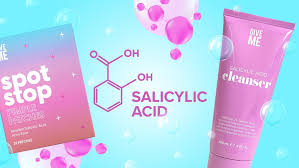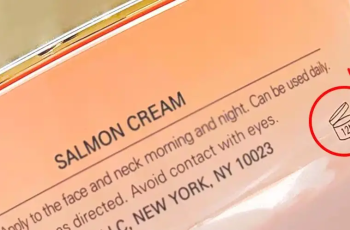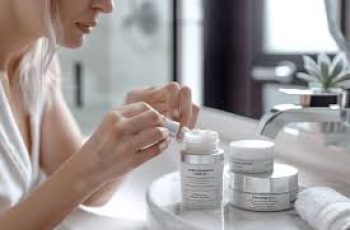
.webp)
.webp)
.webp)
How Does Salicylic Acid Work?
.webp)
.webp)
Salicylic acid, a popular beta hydroxy acid (BHA), is derived naturally from willow bark and has been widely embraced for its powerful exfoliating and pore-clearing properties.
.webp)
.webp)
.webp)
Unlike alpha hydroxy acids such as glycolic or lactic acid, salicylic acid is oil-soluble, allowing it to penetrate deeper into the skin’s pores and dissolve excess sebum, dirt, and debris that cause blemishes.
.webp)
.webp)
Its small molecular size enhances this penetration, making it effective at unclogging pores and reducing the buildup of impurities, bacteria, and dead skin cells that contribute to breakouts.
.webp)
.webp)
.webp)
Because of these unique characteristics, salicylic acid is favored particularly by those with oily or acne-prone skin types looking to achieve clearer, smoother complexions.
.webp)
.webp)
If you want to dive deeper into the many benefits of salicylic acid, we invite you to check out our dedicated blog post about this clever BHA on The Beauty Insiders website.
.webp)
.webp)
.webp)
Today, however, we’re focusing on exactly how salicylic acid works at a biochemical level and what you can expect when incorporating it into your skincare routine.
.webp)
.webp)
How Long Does It Take for Salicylic Acid to Work?
.webp)
.webp)
.webp)
When you first introduce salicylic acid into your regimen, you’ll notice there are many product formats available, including cleansers, toners, serums, and creams, each varying in potency and contact time.
.webp)
.webp)
Typically, you can expect to see a marked improvement in overall skin clarity and texture within about eight weeks of consistent use, as skin cells undergo their natural renewal cycle.
.webp)
.webp)
.webp)
The specific formulation you choose influences how quickly results appear; for example, exfoliating toners with lower salicylic acid concentrations are milder and may take longer to show effects.
.webp)
.webp)
In contrast, serums usually contain higher percentages of salicylic acid and stay on the skin longer, which can accelerate visible improvements but require careful usage to avoid irritation.
.webp)
.webp)
.webp)
Is It Bad to Use Salicylic Acid Every Day?
.webp)
.webp)
Using salicylic acid daily is generally safe if you stick to over-the-counter products that have lower concentrations, usually up to 2%, as these are designed for regular, gentle exfoliation.
.webp)
.webp)
.webp)
However, prescription-strength products contain higher percentages and should be used with caution under medical supervision to prevent excessive dryness, redness, and irritation.
.webp)
.webp)
Overusing salicylic acid may strip your skin of natural oils, leading to dryness and triggering the skin to produce even more sebum, which can worsen breakouts and disturb your skin’s pH balance.
.webp)
.webp)
.webp)
If you are uncertain about how often to apply salicylic acid or which product is right for you, it’s always best to consult a dermatologist who can tailor recommendations to your skin’s needs.
.webp)
.webp)
Does Salicylic Acid Actually Work?
.webp)
.webp)
.webp)
Absolutely! Salicylic acid effectively targets mild to moderate acne, including blackheads and whiteheads, by penetrating pores to dissolve blockages and calm inflammation.
.webp)
.webp)
It’s well-regarded for not only treating existing blemishes but also preventing new ones from forming, which contributes to clearer, more even skin over time.
.webp)
.webp)
.webp)
For severe or cystic acne, salicylic acid might not be potent enough, and you may need stronger treatments like retinol or benzoyl peroxide, which require medical guidance for safe use.
.webp)
.webp)
Both retinol and benzoyl peroxide are highly effective but must be used cautiously; consulting a healthcare professional and performing a patch test beforehand are critical steps.
.webp)
.webp)
.webp)
Why Shouldn’t You Use Salicylic Acid?
.webp)
.webp)
Salicylic acid isn’t suitable for everyone, particularly those with very dry or highly sensitive skin, because its small molecular size allows it to penetrate deeply, which can be overly drying.
.webp)
.webp)
.webp)
If your skin tends to be dry or reactive, salicylic acid may exacerbate irritation, leading to discomfort and potentially damaging your skin’s natural barrier function.
.webp)
.webp)
In such cases, polyhydroxy acids (PHAs) are a gentler alternative chemical exfoliant option that provides mild exfoliation without causing dryness or sensitivity, making them ideal for delicate skin.
.webp)
.webp)
.webp)
To learn more about PHAs and how they compare to BHAs, check out our related blog post dedicated to these skin-friendly acids and their benefits.
.webp)
.webp)
Does Salicylic Acid Remove Blackheads?
.webp)
.webp)
.webp)
Yes, salicylic acid is highly effective at removing blackheads by penetrating deep into clogged pores and dissolving the combination of sebum, dirt, and dead skin that causes them.
.webp)
.webp)
Blackheads appear dark because the pore contents oxidize when exposed to air, which many mistakenly think can be removed by physical scrubs; however, scrubs only treat surface skin.
.webp)
.webp)
.webp)
The root of a blackhead lies deep within the pore, where only chemical exfoliants like salicylic acid can reach to unclog and exfoliate, helping prevent future formation of blackheads and whiteheads.
.webp)
.webp)
Regular use of salicylic acid exfoliants can significantly reduce the appearance of blackheads and improve skin texture by clearing out buildup before it becomes visible.
.webp)
.webp)
.webp)
Can I Leave Salicylic Acid on Overnight?
.webp)
.webp)
You can safely leave salicylic acid on your skin overnight, especially when using formulations like serums or moisturizers that are designed for prolonged contact.
.webp)
.webp)
.webp)
However, it’s important to use products containing no more than 2% salicylic acid to avoid irritation, redness, or discomfort, which can result from higher concentrations applied for extended periods.
.webp)
.webp)
In the morning, rinse off any residue and follow up with your usual skincare routine, making sure to apply a broad-spectrum sunscreen with SPF 30 or higher to protect your freshly exfoliated skin.
.webp)
.webp)
.webp)
Sunscreen is crucial because salicylic acid increases your skin’s sensitivity to UV rays, making it more vulnerable to sun damage even on cloudy days.
.webp)
.webp)
Final Thoughts on Salicylic Acid
.webp)
.webp)
.webp)
Salicylic acid remains one of the most effective and accessible BHAs available, prized for its ability to exfoliate deeply, unclog pores, and improve skin clarity with consistent use.
.webp)
.webp)
Choosing the right formulation and usage frequency based on your skin type will maximize benefits while minimizing any risk of irritation or dryness.
Remember to introduce salicylic acid gradually, monitor your skin’s response, and always pair exfoliation with proper hydration and sun protection to maintain a healthy skin barrier.
If you’re curious about adding salicylic acid to your skincare routine or have questions about which product to pick, don’t hesitate to reach out or follow us on Instagram for more tips and advice.
Feel free to send me a message anytime if you want personalized skincare guidance or recommendations tailored to your unique skin needs.



